A Review of Quantitative Characterization of Phase Interface Dynamics and Optimization of Heat Transfer Modeling in Direct Contact Heat Transfer
Abstract
1. Introduction
2. Measurement and Quantification of Multiphase Mixing in Direct Contact Heat Transfer Processes
2.1. The Role of Bubbles in the Study of Direct Contact Heat Transfer Processes
2.2. Phase Change Bubble Cluster Capture and Segmentation
2.3. Quantification and Evaluation of the Spatial Distribution of Bubbles
3. Modeling and Optimization of Direct Contact Heat Transfer Processes
3.1. Numerical Simulation Study of Heat Transfer Characteristics and Structural Optimization of Direct Contact PCM Heat Exchangers
3.2. Study of Optimization Algorithms for Direct Contact Heat Transfer Systems
3.3. Modeling of Direct Contact Heat Transfer
4. Challenges and Prospects for Direct Contact Heat Transfer Processes
5. Conclusions
- (1)
- Phase change is an important process in the study of direct contact heat transfer. The main research of scholars has focused on studying the quantification of gas–liquid phase change and solid–liquid phase change processes, and optimization of the heat transfer process to suit industrial applications.
- (2)
- After discussion, we found that academics have focused on the research objective of quantifying and optimizing the direct contact heat transfer process. The in-depth mechanism of direct contact heat transfer has been neglected. The non-equilibrium phase transition model breaks through the simplified assumptions of the traditional equilibrium theory on the phase transition rate, interface behavior, and extreme conditions through dynamic interface tracking, micro-mechanism embedding, and cross-scale coupling. It has the potential to become a theoretical tool for in-depth discussion of the mechanism of direct contact heat transfer.
- (3)
- In future research work, it is suggested to integrate deep learning with non-equilibrium phase transition models to construct a data-physics dual-driven cross-scale heat transfer model, in order to break through the bottleneck of the traditional methods in dynamic interface capture, multi-field coupling, and extreme operating condition prediction.
Author Contributions
Funding
Data Availability Statement
Acknowledgments
Conflicts of Interest
Abbreviations
| Volume heat transfer coefficient | |
| Q | heat transmission |
| V | Continuous phase volume |
| Temperature difference between two-phase flow | |
| Log mean temperature difference | |
| Discrete phase mass flow | |
| Specific heat capacity of the continuous phase | |
| Discrete phase outlet temperature | |
| Discrete phase intlet temperature | |
| Continuous phase outlet temperature | |
| Continuous phase intlet temperature | |
| Volume fraction | |
| Density of the vapor phase | |
| Velocity of the vapor phase | |
| Rate of mass transfer from the liquid phase to the gas phase | |
| Rate of mass transfer from the gas phase to the liquid phase |
References
- Hyun, Y.J.; Hyun, J.H.; Chun, W.G.; Kang, Y.H. An Experimental Investigation into the Operation of a Direct Contact Heat Exchanger for Solar Exploitation. Int. Commun. Heat Mass Transf. 2005, 32, 425–434. [Google Scholar] [CrossRef]
- Kalantari, H.; Amiri, L.; Ghoreishi-Madiseh, S.A. Analysis of the Performance of Direct Contact Heat Exchange Systems for Application in Mine Waste Heat Recovery. Int. J. Energy Res. 2022, 46, 290–307. [Google Scholar] [CrossRef]
- Maalouf, S.; Boulawz Ksayer, E.; Clodic, D. Investigation of Direct Contact Condensation for Wet Flue-Gas Waste Heat Recovery Using Organic Rankine Cycle. Energy Convers. Manag. 2016, 107, 96–102. [Google Scholar] [CrossRef]
- Zhu, K.; Xia, J.; Xie, X.; Jiang, Y. Total Heat Recovery of Gas Boiler by Absorption Heat Pump and Direct-Contact Heat Exchanger. Appl. Therm. Eng. 2014, 71, 213–218. [Google Scholar] [CrossRef]
- Mahmoud, M.M.; Karayiannis, T.G. Pool Boiling Review: Part I—Fundamentals of Boiling and Relation to Surface Design. Therm. Sci. Eng. Prog. 2021, 25, 101024. [Google Scholar] [CrossRef]
- Li, J.; Zhang, X. Numerical Simulation of Wall Condensation and Direct Contact Condensation in Containment Suppression Pool of PWR. Ann. Nucl. Energy 2018, 120, 108–117. [Google Scholar] [CrossRef]
- Khan, J.-U.-R.; Yaqub, M.; Zubair, S.M. Performance Characteristics of Counter Flow Wet Cooling Towers. Energy Convers. Manag. 2003, 44, 2073–2091. [Google Scholar] [CrossRef]
- Khan, J.-U.-R.; Qureshi, B.A.; Zubair, S.M. A Comprehensive Design and Performance Evaluation Study of Counter Flow Wet Cooling Towers. Int. J. Refrig. 2004, 27, 914–923. [Google Scholar] [CrossRef]
- Wongwises, S.; Naphon, P. Heat-Mass Transfer and Flow Characteristics of Two-Phase Countercurrent Annular Flow in a Vertical Pipe. Int. Commun. Heat Mass Transf. 1998, 25, 819–829. [Google Scholar] [CrossRef]
- Han, H.; Gabriel, K. Flow Physics of Upward Cocurrent Gas-Liquid Annular Flow in a Vertical Small Diameter Tube. Microgravity Sci. Technol. 2006, 18, 27–38. [Google Scholar] [CrossRef]
- Inaba, H.; Aoyama, S.; Haruki, N.; Horibe, A.; Nagayoshi, K. Heat and Mass Transfer Characteristics of Air Bubbles and Hot Water by Direct Contact. Heat Mass Transf. 2002, 38, 449–457. [Google Scholar] [CrossRef]
- Bezrodny, M.K.; Goliyad, N.N.; Barabash, P.A.; Kostyuk, A.P. Interphase Heat-and-Mass Transfer in a Flowing Bubbling Layer. Therm. Eng. 2012, 59, 479–484. [Google Scholar] [CrossRef]
- Morciano, M.; Malaguti, M.; Ricceri, F.; Tiraferri, A.; Fasano, M. Process Optimization of Osmotic Membrane Distillation for the Extraction of Valuable Resources from Water Streams. NPJ Clean Water 2024, 7, 1. [Google Scholar] [CrossRef]
- Milosavljevic, N.; Heikkilä, P. A Comprehensive Approach to Cooling Tower Design. Appl. Therm. Eng. 2001, 21, 899–915. [Google Scholar] [CrossRef]
- Abishek, S.; King, A.J.C.; Narayanaswamy, R. Computational Analysis of Two-Phase Flow and Heat Transfer in Parallel and Counter Flow Double-Pipe Evaporators. Int. J. Heat Mass Transf. 2017, 104, 615–626. [Google Scholar] [CrossRef]
- Barabash, P.; Solomakha, A.; Sereda, V. Experimental Investigation of Heat and Mass Transfer Characteristics in Direct Contact Exchanger. Int. J. Heat Mass Transf. 2020, 162, 120359. [Google Scholar] [CrossRef]
- Law, D.; Selvamani, A.S.; Nava, L. Combined Effect of Bubble Size and Gas Volume Fraction on Natural Convective Heat Transfer Enhancement in Homogeneous Bubbly Flow: Eulerian–Eulerian Numerical Simulations. ASME J. Heat Mass Transf. 2023, 145, 121601. [Google Scholar] [CrossRef]
- Chen, Y.; Zhang, X.; Li, C.; Zhou, L.; Wang, W.; Chen, G.; Duan, J. Mass Transfer Enhancement and Flow Field Simulations for a Venturi Bubble Generator with Multiple Inlet Tubes. Nucl. Eng. Des. 2024, 424, 113249. [Google Scholar] [CrossRef]
- Roccon, A.; Zonta, F.; Soldati, A. Phase-Field Modeling of Complex Interface Dynamics in Drop-Laden Turbulence. Phys. Rev. Fluids 2023, 8, 090501. [Google Scholar] [CrossRef]
- Mao, X.; Rath, B.; Jaiman, R. A 3D Phase-Field Based Eulerian Variational Framework for Multiphase Fluid–Structure Interaction with Contact Dynamics. Comput. Methods Appl. Mech. Eng. 2024, 429, 117172. [Google Scholar] [CrossRef]
- Jin, N.; Lu, H.; Zhang, J.; Ren, W. Characterization of Bubble Size of Gas–Liquid Two-Phase Flow Using Ultrasonic Signals. IEEE Sens. J. 2024, 24, 16867–16874. [Google Scholar] [CrossRef]
- Wang, Q.; Pérez, A.T.; Guan, Y.; Wu, J. Numerical Analysis of Single Bubble Dynamics and Heat Transfer in Electric Field-Enhanced Nucleate Boiling. Int. J. Heat Fluid Flow 2024, 108, 109430. [Google Scholar] [CrossRef]
- Wang, Y.; Luan, H.; Ruan, Y. Evaluation of the Effect of Geometric Parameters on the Heat Transfer Performance of Bubble Heat Exchanger Based on CFD. J. Phys. Conf. Ser. 2024, 2835, 012063. [Google Scholar] [CrossRef]
- Liao, Y.; Krepper, E.; Lucas, D. A Baseline Closure Concept for Simulating Bubbly Flow with Phase Change: A Mechanistic Model for Interphase Heat Transfer Coefficient. Nucl. Eng. Des. 2019, 348, 1–13. [Google Scholar] [CrossRef]
- Georgoulas, A.; Andredaki, M.; Marengo, M. An Enhanced VOF Method Coupled with Heat Transfer and Phase Change to Characterise Bubble Detachment in Saturated Pool Boiling. Energies 2017, 10, 272. [Google Scholar] [CrossRef]
- Li, X.; Li, G. An Improved Image Procession Algorithm for Bubble Flow Characteristics in Gas–Liquid Reactor. Asia-Pac. J. Chem. Eng. 2019, 14, e2308. [Google Scholar] [CrossRef]
- Sun, H.; Li, Z.; Wang, S.; Xu, J.; Wang, H. Evolution and Quantification of Distribution Uniformity of Bubbles Using Computational Geometry. Chem. Eng. Sci. 2022, 247, 116910. [Google Scholar] [CrossRef]
- Lecuona, A.; Sosa, P.A.; Rodríguez, P.A.; Zequeira, R.I. Volumetric Characterization of Dispersed Two-Phase Flows by Digital Image Analysis. Meas. Sci. Technol. 2000, 11, 1152. [Google Scholar] [CrossRef]
- Rodríguez-Rodríguez, J.; Martínez-Bazán, C.; Montañes, J.L. A Novel Particle Tracking and Break-up Detection Algorithm: Application to the Turbulent Break-up of Bubbles. Meas. Sci. Technol. 2003, 14, 1328. [Google Scholar] [CrossRef]
- Lau, Y.M.; Deen, N.G.; Kuipers, J.A.M. Development of an Image Measurement Technique for Size Distribution in Dense Bubbly Flows. Chem. Eng. Sci. 2013, 94, 20–29. [Google Scholar] [CrossRef]
- Deng, Y.; Li, B.; Li, Z.; Xu, J.; Wang, H. Quantification of Motion Characteristics of Vertically Ascending Bubbles in NaCl Solution via Image Processing. Int. J. Chem. React. Eng. 2023, 21, 701–715. [Google Scholar] [CrossRef]
- Ekwonu, M.C.; Kim, K.C. Visualization of Foam Formation from Vertically Free-Falling Impinging Water Jet. J. Vis. 2021, 24, 9–17. [Google Scholar] [CrossRef]
- Li, J.; Shao, S.; Hong, J. Machine Learning Shadowgraph for Particle Size and Shape Characterization. Meas. Sci. Technol. 2021, 32, 015406. [Google Scholar] [CrossRef]
- Chen, B.; Ekwonu, M.C.; Zhang, S. Deep Learning-Assisted Segmentation of Bubble Image Shadowgraph. J. Vis. 2022, 25, 1125–1136. [Google Scholar] [CrossRef]
- Poletaev, I.; Tokarev, M.P.; Pervunin, K.S. Bubble Patterns Recognition Using Neural Networks: Application to the Analysis of a Two-Phase Bubbly Jet. Int. J. Multiphase Flow 2020, 126, 103194. [Google Scholar] [CrossRef]
- Kim, Y.; Park, H. Deep Learning-Based Automated and Universal Bubble Detection and Mask Extraction in Complex Two-Phase Flows. Sci. Rep. 2021, 11, 8940. [Google Scholar] [CrossRef]
- Wang, Q.; Xiaolu, L.; Xu, C.; Tianhong, Y.; Yuntang, L. Bubble Recognizing and Tracking in a Plate Heat Exchanger by Using Image Processing and Convolutional Neural Network. Int. J. Multiphase Flow 2021, 138, 103593. [Google Scholar] [CrossRef]
- Haas, T.; Schubert, C.; Eickhoff, M.; Pfeifer, H. BubCNN: Bubble Detection Using Faster RCNN and Shape Regression Network. Chem. Eng. Sci. 2020, 216, 115467. [Google Scholar] [CrossRef]
- Serra, P.L.S.; Masotti, P.H.F.; Rocha, M.S.; De Andrade, D.A.; Torres, W.M.; De Mesquita, R.N. Two-Phase Flow Void Fraction Estimation Based on Bubble Image Segmentation Using Randomized Hough Transform with Neural Network (RHTN). Prog. Nucl. Energy 2020, 118, 103133. [Google Scholar] [CrossRef]
- Hobold, G.M.; da Silva, A.K. Automatic Detection of the Onset of Film Boiling Using Convolutional Neural Networks and Bayesian Statistics. Int. J. Heat Mass Transf. 2019, 134, 262–270. [Google Scholar] [CrossRef]
- Rassoulinejad-Mousavi, S.M.; Al-Hindawi, F.; Soori, T.; Rokoni, A.; Yoon, H.; Hu, H.; Wu, T.; Sun, Y. Deep Learning Strategies for Critical Heat Flux Detection in Pool Boiling. Appl. Therm. Eng. 2021, 190, 116849. [Google Scholar] [CrossRef]
- Malakhov, I.; Seredkin, A.; Chernyavskiy, A.; Serdyukov, V.; Mullyadzanov, R.; Surtaev, A. Deep Learning Segmentation to Analyze Bubble Dynamics and Heat Transfer during Boiling at Various Pressures. Int. J. Multiph. Flow 2023, 162, 104402. [Google Scholar] [CrossRef]
- Dammel, F.; Beer, H. Heat Transfer from a Continuous Liquid to an Evaporating Drop: A Numerical Analysis. Int. J. Therm. Sci. 2003, 42, 677–686. [Google Scholar] [CrossRef]
- Ascanio, G. Mixing Time in Stirred Vessels: A Review of Experimental Techniques. Chin. J. Chem. Eng. 2015, 23, 1065–1076. [Google Scholar] [CrossRef]
- Yu, L.; Hu, C.; Xiao, Z.; Li, Y.; Wang, H. Two-Stage Separate Flow Measurement System Based on Compact Gas–Liquid Cylindrical Cyclone and Electrical Resistance Tomography. Ind. Eng. Chem. Res. 2024, 63, 14298–14306. [Google Scholar] [CrossRef]
- McKee, S.L.; Williams, R.A.; Boxman, A. Development of Solid-Liquid Mixing Models Using Tomographic Techniques. Chem. Eng. J. Biochem. Eng. J. 1995, 56, 101–107. [Google Scholar] [CrossRef]
- Wang, H.; Yang, W. Application of Electrical Capacitance Tomography in Pharmaceutical Fluidised Beds—A Review. Chem. Eng. Sci. 2021, 231, 116236. [Google Scholar] [CrossRef]
- Xu, J.; Wang, H.; Fang, H. Multiphase Mixing Quantification by Computational Homology and Imaging Analysis. Appl. Math. Model. 2011, 35, 2160–2171. [Google Scholar] [CrossRef]
- Xu, J.; Xiao, Q.; Chen, Y.; Fei, Y.; Pan, J.; Wang, H. A Modified L2-Star Discrepancy Method for Measuring Mixing Uniformity in a Direct Contact Heat Exchanger. Int. J. Heat Mass Transf. 2016, 97, 70–76. [Google Scholar] [CrossRef]
- Xu, J.; Xiao, Q.; Lv, Z.; Huang, J.; Xiao, R.; Pan, J.; Wang, H. New Metrics for Measuring Multiphase Mixing Effects in a Direct-Contact Heat Exchanger. Appl. Therm. Eng. 2019, 147, 592–601. [Google Scholar] [CrossRef]
- Ong, M.S.; Kuang, Y.C.; Ooi, M.P.-L. Statistical Measures of Two Dimensional Point Set Uniformity. Comput. Stat. Data Anal. 2012, 56, 2159–2181. [Google Scholar] [CrossRef]
- Xiao, Q.; Pan, J.; Wang, S.; Lv, Z.; Xu, J.; Wang, H. Measure of Bubble Non-Uniformity within Circular Region in a Direct-Contact Heat Exchanger. Int. J. Heat Mass Transf. 2017, 110, 257–261. [Google Scholar] [CrossRef]
- Sun, H.; Xu, J.; Wang, S.; Cai, G.; Wang, H.; Yin, W. Accurate Characterization of Bubble Mixing Uniformity in a Circular Region Using Computational Geometric Theory. Particuology 2024, 86, 149–159. [Google Scholar] [CrossRef]
- Rakotondrandisa, A.; Danaila, I.; Danaila, L. Numerical Modelling of a Melting-Solidification Cycle of a Phase-Change Material with Complete or Partial Melting. Int. J. Heat Fluid Flow 2019, 76, 57–71. [Google Scholar] [CrossRef]
- He, S.; Wang, W.; Wei, L.; Ding, J. Heat Transfer Enhancement and Melting Behavior of Phase Change Material in a Direct-Contact Thermal Energy Storage Container. J. Energy Storage 2020, 31, 101665. [Google Scholar] [CrossRef]
- Wang, W.; He, S.; Ding, J.; Li, H.; Yan, J.; Yang, J. Numerical Evaluation on a Direct-Contact Thermal Energy Storage System. Energy Procedia 2017, 105, 4389–4394. [Google Scholar] [CrossRef]
- Hasan, H.A.; Hussain, I.Y. Theoretical Formulation and Numerical Simulation of Thermal Performance Enhancements for Cascade Thermal Energy Storage Systems. IOP Conf. Ser. Mater. Sci. Eng. 2018, 433, 012043. [Google Scholar] [CrossRef]
- Santos, T.; Wrobel, L.C.; Hopper, N.; Kolokotroni, M. Numerical Design and Laboratory Testing of Encapsulated PCM Panels for PCM-Air Heat Exchangers. Appl. Sci. 2021, 11, 676. [Google Scholar] [CrossRef]
- Lewis, S.D.; Chippar, P. Effect of Buoyancy Force in Phase Change Material-Based Metal Hydride Reactor. J. Therm. Sci. Eng. Appl. 2024, 16, 061007. [Google Scholar] [CrossRef]
- Jaffray, C.; Siddiqui, K.; Straatman, A.G. An Efficient Method for Modelling Thermal Energy Storage in Packed Beds of Spherically Encapsulated Phase Change Material. J. Energy Storage 2024, 81, 110462. [Google Scholar] [CrossRef]
- Ignatowicz, K.; Solaï, E.; Morency, F.; Beaugendre, H. Data-Driven Calibration of Rough Heat Transfer Prediction Using Bayesian Inversion and Genetic Algorithm. Energies 2022, 15, 3793. [Google Scholar] [CrossRef]
- McClure, E.R.; Carey, V.P. Genetic Algorithm and Deep Learning to Explore Parametric Trends in Nucleate Boiling Heat Transfer Data. J. Heat Transf. 2021, 143, 121602. [Google Scholar] [CrossRef]
- Faghiri, S.; Aria, H.P.; Shafii, M.B. Multi-Objective Optimization of Acetone Droplet Impingement on Phase Change Material in Direct-Contact Discharge Method. J. Energy Storage 2022, 46, 103862. [Google Scholar] [CrossRef]
- Li, B.; Yang, P.; Li, Z.; Xu, J.; Wang, H. A Multi-Objective Comprehensive Evaluation of Heat Transfer Performance of a Direct-Contact Heat Exchanger. J. Therm. Sci. Eng. Appl. 2022, 15, 011014. [Google Scholar] [CrossRef]
- Zheng, G.; Xiao, Q.; Zhu, S.; Wang, H.; Geng, J.; Zhao, S.; Huang, J. Analysis of Heat Transfer Performance of ORC Direct Contact Heat Exchanger by GRA-VMD-LSSVM Model Using Optimization. Korean J. Chem. Eng. 2022, 39, 1729–1743. [Google Scholar] [CrossRef]
- Meghdadi Isfahani, A.H.; Hosseinian, A.; Bagherzadeh, S.A. Using Artificial Neural Network and Parametric Regression to Predict the Effect of Mechanical Vibrations on Heat Transfer Coefficient of a Counter Flow Heat Exchanger Containing MWCNTs-Water Nanofluid. J. Therm. Anal. Calorim. 2024, 149, 1251–1266. [Google Scholar] [CrossRef]
- Andaç, B.; Safak, M.; Alişan, G.; Ahmet, S. Assessment of heat transfer characteristics of a corrugated heat exchanger based on various corrugation parameters using artificial neural network approach. Int. J. Heat Fluid Flow. 2024, 108, 109455. [Google Scholar]
- Xie, G.; Sunden, B.; Wang, Q.; Tang, L. Performance Predictions of Laminar and Turbulent Heat Transfer and Fluid Flow of Heat Exchangers Having Large Tube-Diameter and Large Tube-Row by Artificial Neural Networks. Int. J. Heat Mass Transf. 2009, 52, 2484–2497. [Google Scholar] [CrossRef]
- Brazhenko, V.; Qiu, Y.; Cai, J.; Wang, D. Thermal Evaluation of Multilayer Wall with a Hat-Stringer in Aircraft Design. Stroj. Vestn. J. Mech. Eng. 2022, 68, 635–641. [Google Scholar] [CrossRef]
- Park, J.; Kim, H. Direct-Contact Heat Transfer of Single Droplets in Dispersed Flow Film Boiling: Experiment and Model Assessment. Nucl. Eng. Technol. 2021, 53, 2464–2476. [Google Scholar] [CrossRef]
- Kendall, G.E.; Rohsenow, W.M. Heat Transfer to Impacting Drops and Post Critical Heat Flux Dispersed Flow; Technical Report No. 100; Massachusetts Institute of Technology: Cambridge, MA, USA, 1978. [Google Scholar]
- Senda, J.; Yamada, K.; Fujimoto, H.; Miki, H. The Heat-Transfer Characteristics of a Small Droplet Impinging upon a Hot Surface. JSME Int. J. Ser. Fluids Eng. Heat Transf. Power Combust. Thermophys. Prop. 1988, 31, 105–111. [Google Scholar] [CrossRef][Green Version]
- Ueda, T.; Enomoto, T.; Kanetsuki, M. Heat Transfer Characteristics and Dynamic Behavior of Saturated Droplets Impinging on a Heated Vertical Surface. Bull. JSME 1979, 22, 724–732. [Google Scholar] [CrossRef]
- Thongwik, S.; Vorayos, N.; Kiatsiriroat, T.; Nuntaphan, A. Thermal Analysis of Slurry Ice Production System Using Direct Contact Heat Transfer of Carbon Dioxide and Water Mixture. Int. Commun. Heat Mass Transf. 2008, 35, 756–761. [Google Scholar] [CrossRef]
- Baqir, A.S.; Mahood, H.B.; Campbell, A.N.; Griffiths, A.J. Measuring the Average Volumetric Heat Transfer Coefficient of a Liquid-Liquid-Vapour Direct Contact Heat Exchanger. Appl. Therm. Eng. 2016, 103, 47–55. [Google Scholar] [CrossRef]
- Mahood, H.B.; Campbell, A.N.; Thorpe, R.B.; Sharif, A.O. Experimental Measurements and Theoretical Prediction for the Volumetric Heat Transfer Coefficient of a Three-Phase Direct Contact Condenser. Int. Commun. Heat Mass Transf. 2015, 66, 180–188. [Google Scholar] [CrossRef]
- Huang, J.; Xiao, Q.; Liu, J.; Wang, H. Modeling Heat Transfer Properties in an ORC Direct Contact Evaporator Using RBF Neural Network Combined with EMD. Energy 2019, 173, 306–316. [Google Scholar] [CrossRef]
- Feng, S.H.; Zhang, W.-X.; Yang, J.; Yang, Y.; Shen, H.-B. Topology Prediction Improvement of alpha-Helical Transmembrane Proteins through Helix-Tail Modeling and Multiscale Deep Learning Fusion. J. Mol. Biol. 2020, 432, 1279–1296. [Google Scholar] [CrossRef]
- Minh Hung, H.; Dieu Hang, T.; Nguyen, M.T. Structural Investigation of Human Prolactin Receptor Transmembrane Domain Homodimerization in a Membrane Environment through Multiscale Simulations. J. Phys. Chem. B 2019, 123, 4858–4866. [Google Scholar] [CrossRef]
- Basso, M.; Azoti, W.; Elmarakbi, H.; Elmarakbi, A. Multiscale Simulation of the Interlaminar Failure of Graphene Nanoplatelets Reinforced Fibers Laminate Composite Materials. J. Appl. Polym. Sci. 2019, 136, 47664. [Google Scholar] [CrossRef]
- Mao, J.; Hu, D.; Meng, F.; Zhou, X.; Song, J.; Wang, R. Multiscale Modeling of Transgranular Short Crack Growth during Fatigue in Polycrystalline Metals. Int. J. Fatigue 2018, 116, 648–658. [Google Scholar] [CrossRef]
- Tong, Z.-X.; He, Y.-L.; Tao, W.-Q. A Review of Current Progress in Multiscale Simulations for Fluid Flow and Heat Transfer Problems: The Frameworks, Coupling Techniques and Future Perspectives. Int. J. Heat Mass Transf. 2019, 137, 1263–1289. [Google Scholar] [CrossRef]
- Spezia, R.; Martínez-Nuñez, E.; Vazquez, S.; Hase, W.L. Theoretical and Computational Studies of Non-Equilibrium and Non-Statistical Dynamics in the Gas Phase, in the Condensed Phase and at Interfaces. Philos. Trans. A Math. Phys. Eng. Sci. 2017, 375, 20170035. [Google Scholar] [CrossRef] [PubMed]
- Zecchetto, M.; Watanabe, T.; Nagata, K.; Da Silva, C.B. Turbulent/Non-Turbulent Interfaces in Equilibrium and Non-Equilibrium Regions in the Absence of Mean Shear. Int. J. Heat Fluid Flow 2023, 103, 109198. [Google Scholar] [CrossRef]
- Joekar-Niasar, V.; Hassanizadeh, S.M.; Dahle, H.K. Non-Equilibrium Effects in Capillarity and Interfacial Area in Two-Phase Flow: Dynamic Pore-Network Modelling. J. Fluid Mech. 2010, 655, 38–71. [Google Scholar] [CrossRef]
- Haugen, K.B.; Firoozabadi, A. Composition at the Interface between Multicomponent Nonequilibrium Fluid Phases. J. Chem. Phys. 2009, 130, 064707. [Google Scholar] [CrossRef]
- Liu, Z.; Wang, S.; Lin, Z.; Wang, X.; Wang, D.; Ouyang, Y.; Zhang, D. A Non-Equilibrium Phase Change Model Based on the Lee Model for Flashing Flows in Converging–Diverging Nozzles. Nucl. Eng. Des. 2024, 423, 113185. [Google Scholar] [CrossRef]
- Schiffbauer, J.; Luo, T. Non-Equilibrium Phase Stabilization Versus Bubble Nucleation at a Nanoscale-Curved Interface. 2017. Available online: https://arxiv.org/abs/1610.09325 (accessed on 1 January 2025).
- Zhang, Z.; Li, X.; Tan, S.; Tian, R.; Liu, K.; Cheng, H. Cross-Scale Coupling Analysis Method for OTSG in SFR and Its Application. Ann. Nucl. Energy 2024, 195, 110188. [Google Scholar] [CrossRef]
- Zeng, X.; Geraci, G.; Eldred, M.S.; Jakeman, J.D.; Gorodetsky, A.A.; Ghanem, R. Multifidelity Uncertainty Quantification with Models Based on Dissimilar Parameters. Comput. Methods Appl. Mech. Eng. 2023, 415, 116205. [Google Scholar] [CrossRef]
- Xiu, D.; Karniadakis, G.E. Modeling Uncertainty in Flow Simulations via Generalized Polynomial Chaos. J. Comput. Phys. 2003, 187, 137–167. [Google Scholar] [CrossRef]
- Zhang, D.; Lu, L.; Guo, L.; Karniadakis, G.E. Quantifying Total Uncertainty in Physics-Informed Neural Networks for Solving Forward and Inverse Stochastic Problems. J. Comput. Phys. 2019, 397, 108850. [Google Scholar] [CrossRef]




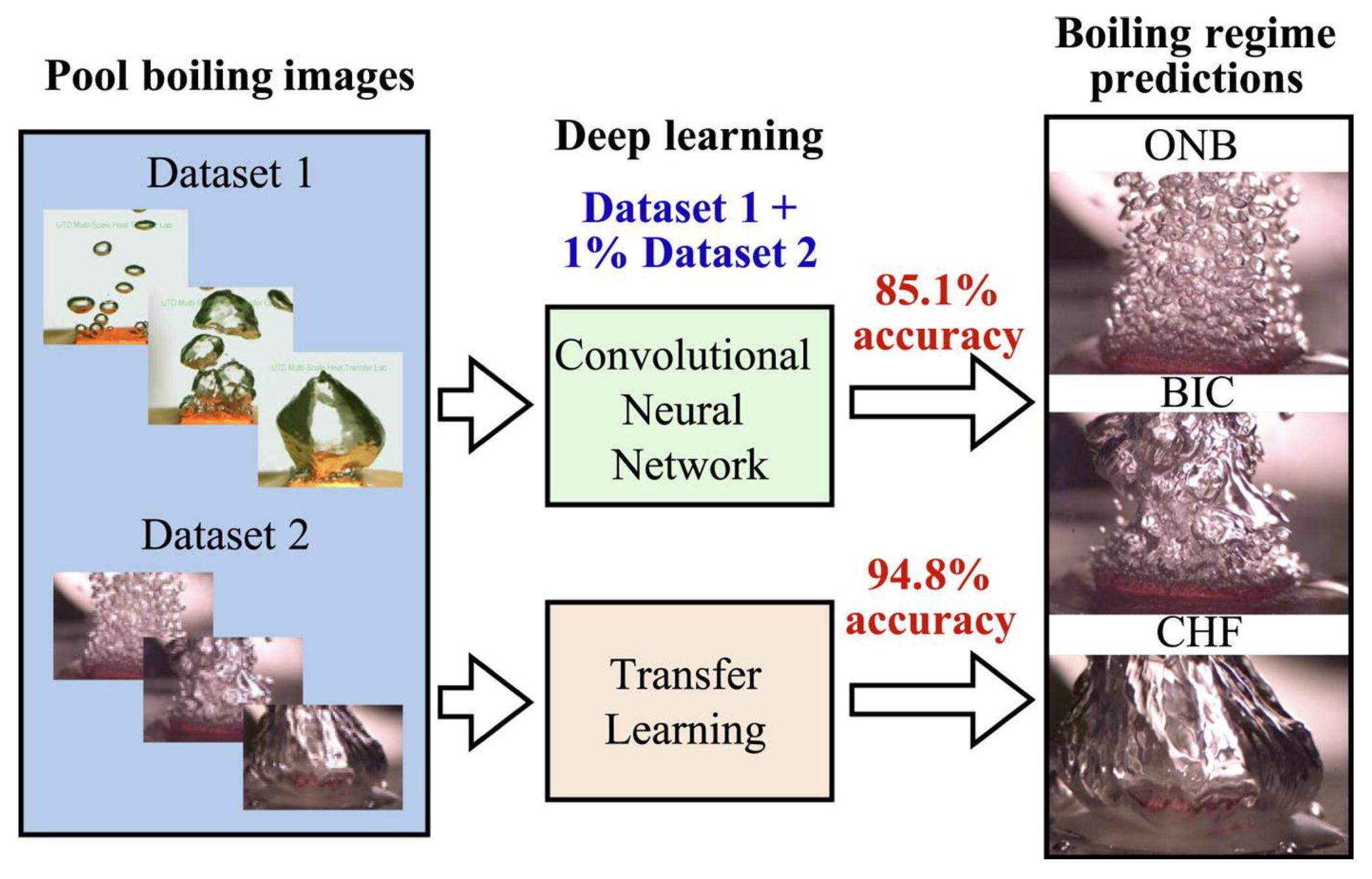



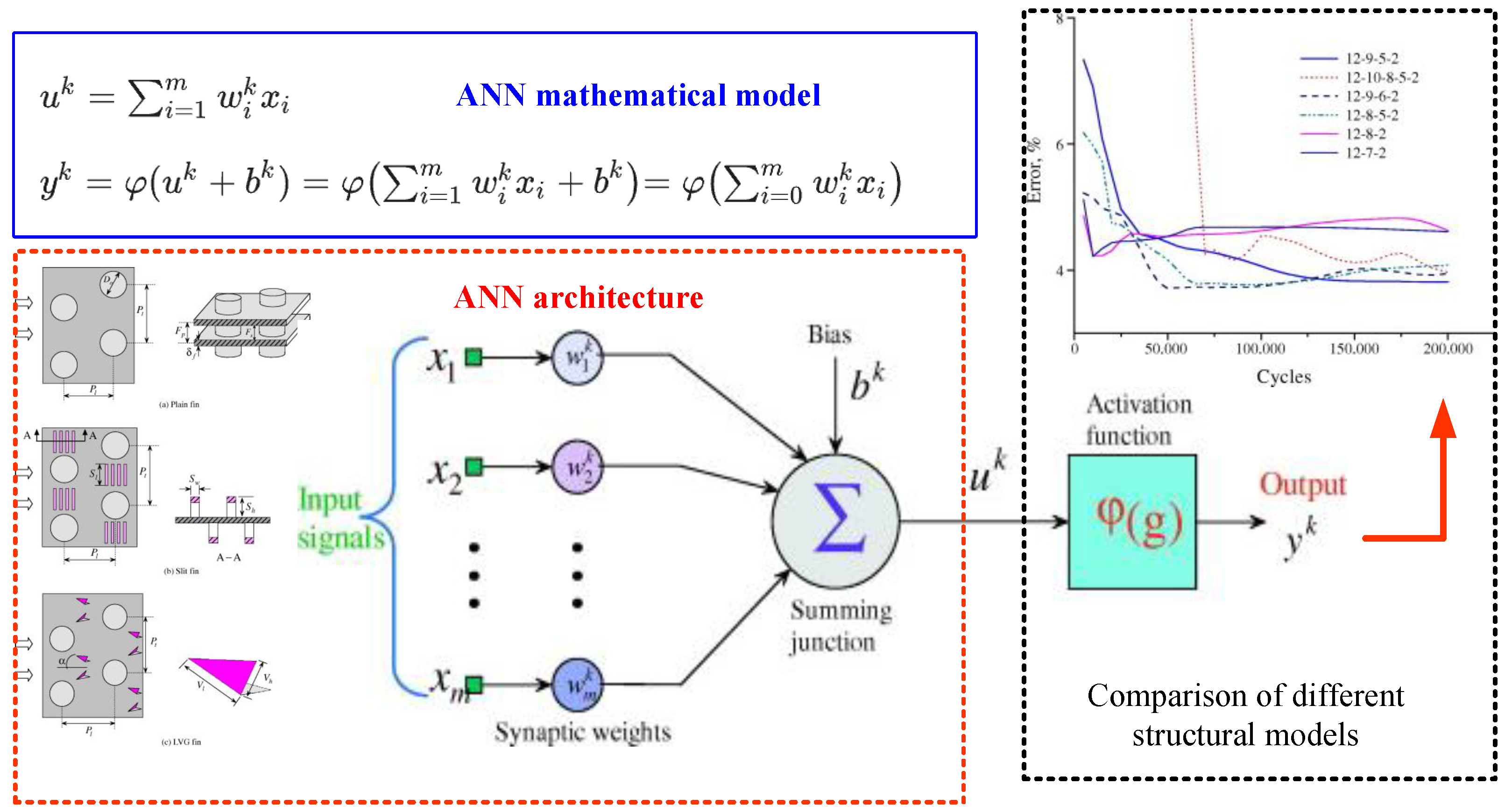

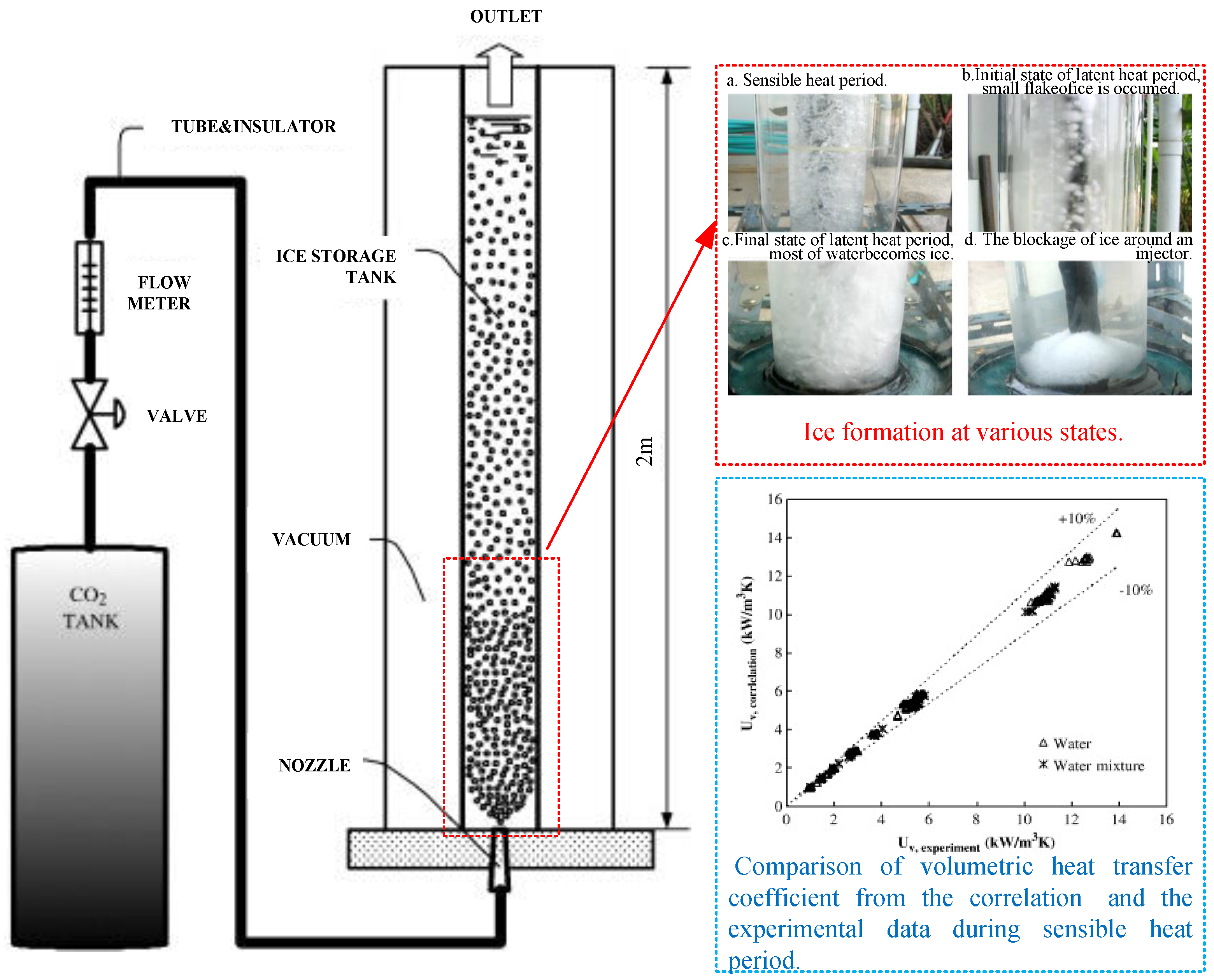
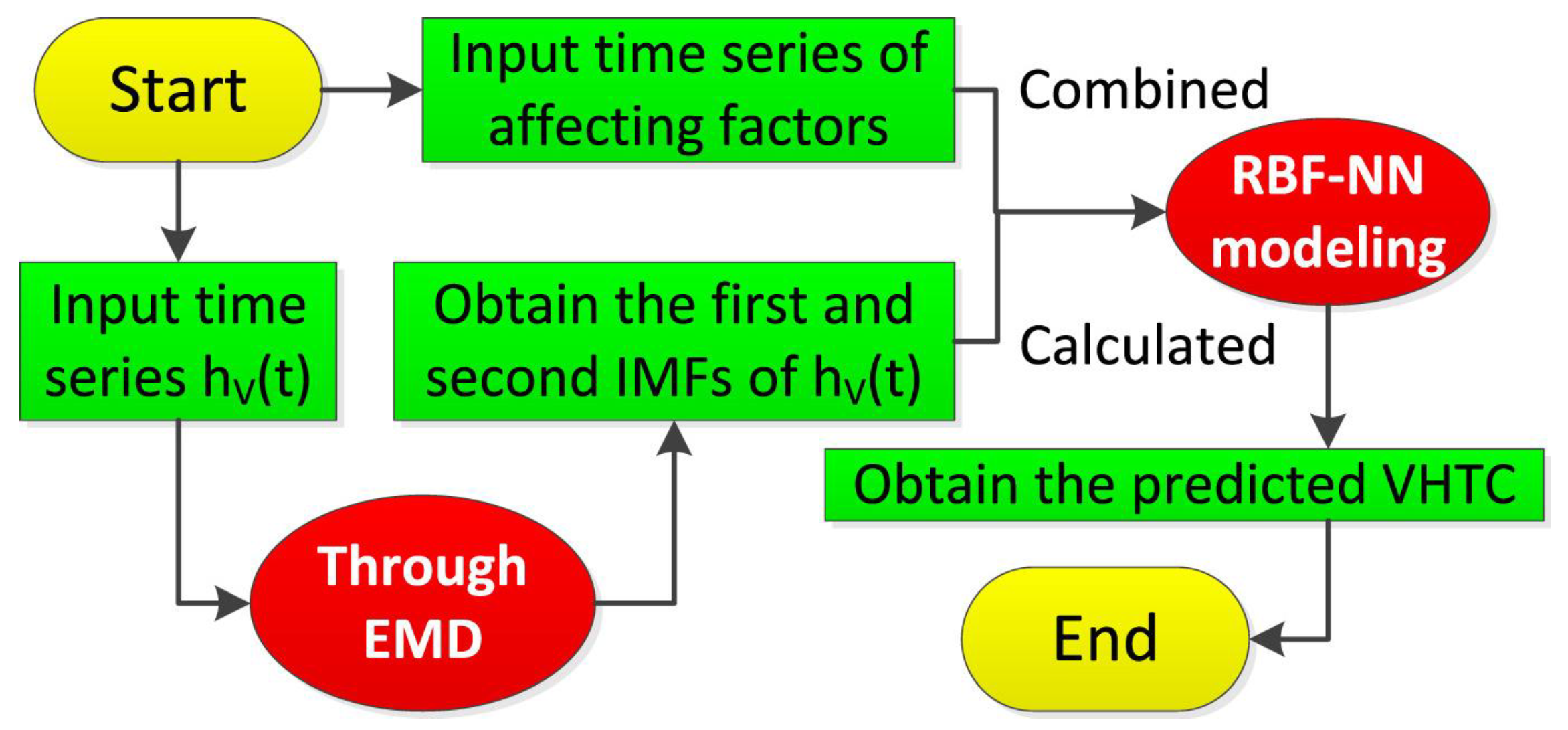
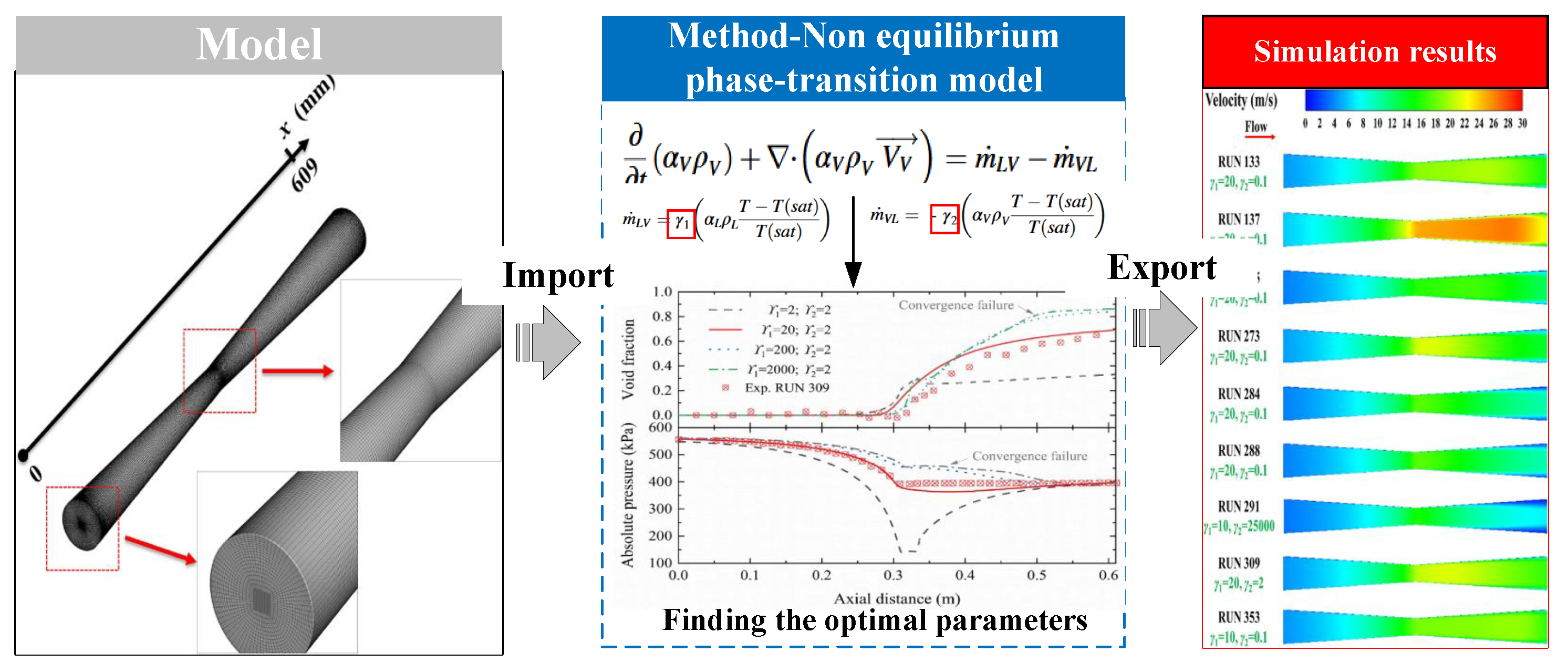
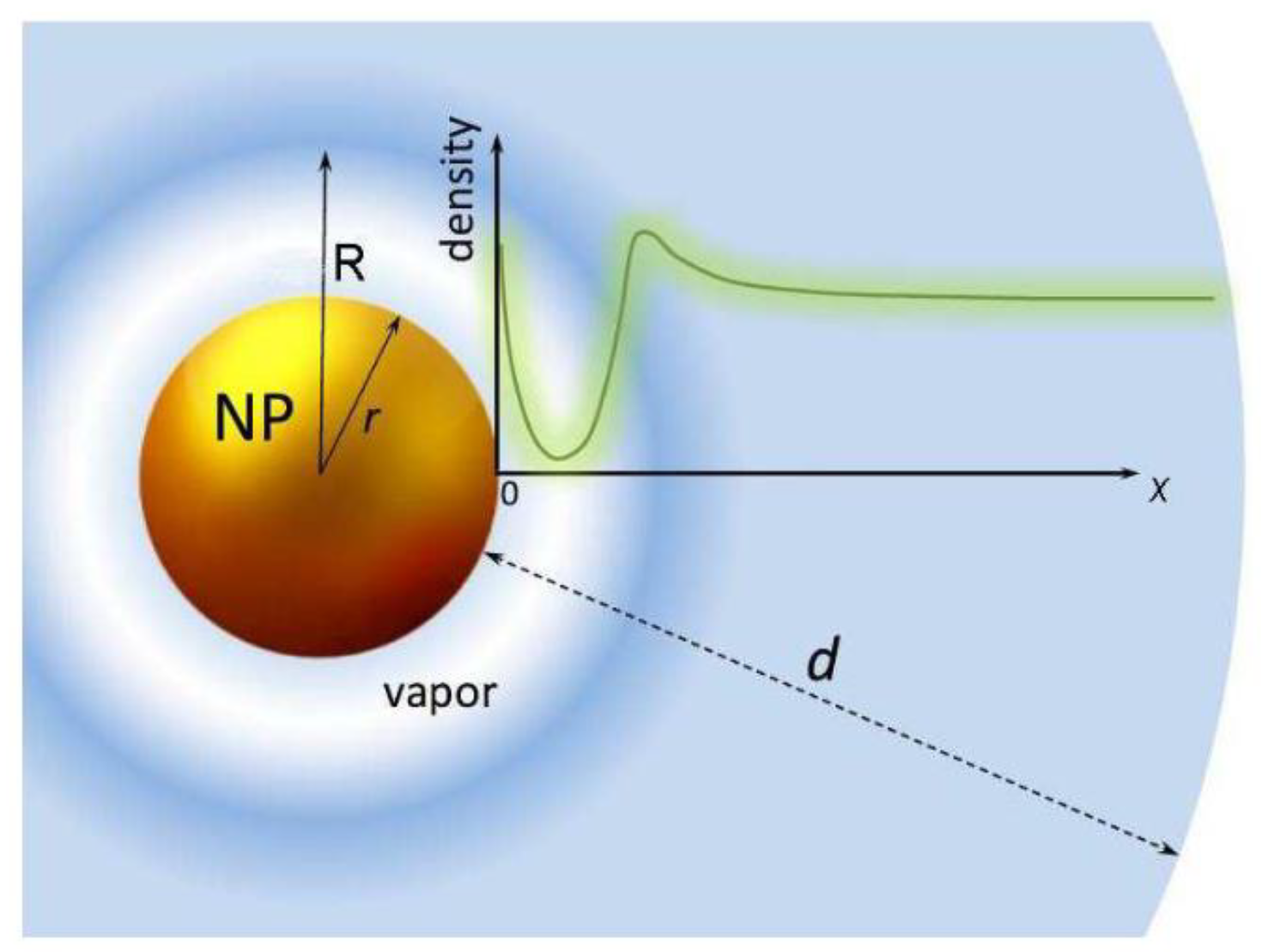
| Method | Advantages | Disadvantages |
|---|---|---|
| Betti number method [48] | Algebraic topology is based on the flow topology and the Betti number quantitatively portrays the degree of mixing homogeneity of the metallurgical bottom-blown bubble population. | The spatial distribution of the bubbles is not taken into account and is only quantitatively described. |
| L2-star discrepancy (CD) and wrap-around L2-star discrepancy (WD) [49] | Both CD and WD have the advantages of alignment invariance, rotational invariance (reflection invariance), and uniformity of measurement projection. | Added time complexity for determining the bubble location. |
| Moment balance [50] | Tilt angles with direction are used to characterize the unbalanced structure due to heterogeneity of mass distribution. | The interplay between localized and global inhomogeneities cannot be more effectively eliminated. |
| Potential energy quality measure [51] | Used to measure the global distribution of a point set and can tolerate occasional close points or even overlapping points. | The relationship between particles and space is not strictly taken into account. |
| Dimension | Macroeconomics | Microstructure |
|---|---|---|
| Field descriptions | Continuous fields (velocity field, temperature field, pressure field, volume fraction) | Discrete particles (motion between molecules) [83] |
| Governing equation | Partial differential equations (Navier–Stokes) | Newton’s equations of motion (MD)/Euler’s equations [83] |
| Calculate costs | Grid-dependent and less computationally expensive. | High computational costs |
| Field hypothesis | The motion between molecules is neglected and relies on the intrinsic relationship of the flow field. | Direct representation of molecular collisions, non-equilibrium effects [83] |
Disclaimer/Publisher’s Note: The statements, opinions and data contained in all publications are solely those of the individual author(s) and contributor(s) and not of MDPI and/or the editor(s). MDPI and/or the editor(s) disclaim responsibility for any injury to people or property resulting from any ideas, methods, instructions or products referred to in the content. |
© 2025 by the authors. Licensee MDPI, Basel, Switzerland. This article is an open access article distributed under the terms and conditions of the Creative Commons Attribution (CC BY) license (https://creativecommons.org/licenses/by/4.0/).
Share and Cite
Wang, M.; Xu, J.; Wang, S.; Wang, H. A Review of Quantitative Characterization of Phase Interface Dynamics and Optimization of Heat Transfer Modeling in Direct Contact Heat Transfer. Energies 2025, 18, 2318. https://doi.org/10.3390/en18092318
Wang M, Xu J, Wang S, Wang H. A Review of Quantitative Characterization of Phase Interface Dynamics and Optimization of Heat Transfer Modeling in Direct Contact Heat Transfer. Energies. 2025; 18(9):2318. https://doi.org/10.3390/en18092318
Chicago/Turabian StyleWang, Mingjian, Jianxin Xu, Shibo Wang, and Hua Wang. 2025. "A Review of Quantitative Characterization of Phase Interface Dynamics and Optimization of Heat Transfer Modeling in Direct Contact Heat Transfer" Energies 18, no. 9: 2318. https://doi.org/10.3390/en18092318
APA StyleWang, M., Xu, J., Wang, S., & Wang, H. (2025). A Review of Quantitative Characterization of Phase Interface Dynamics and Optimization of Heat Transfer Modeling in Direct Contact Heat Transfer. Energies, 18(9), 2318. https://doi.org/10.3390/en18092318







